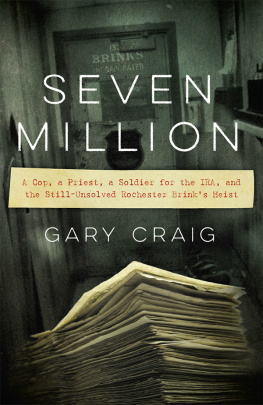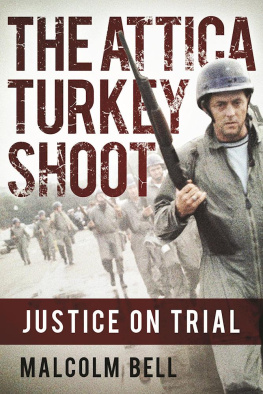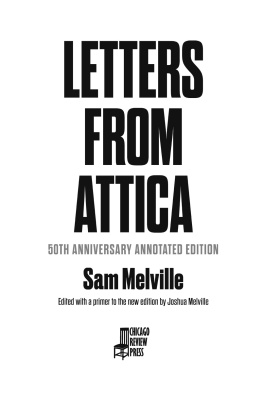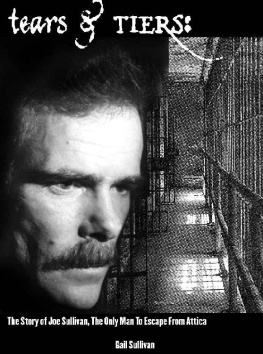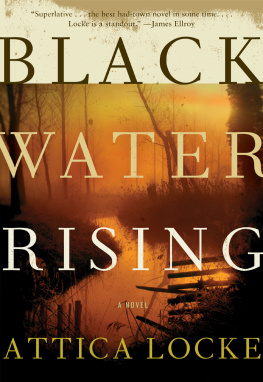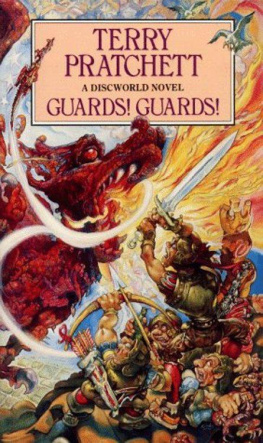Copyright 2021 by Deanne Quinn Miller and Gary Craig
All rights reserved, including the right to reproduce this book or portions thereof in any form whatsoever.
For more information, email
Diversion Books
A division of Diversion Publishing Corp.
www.diversionbooks.com
First Diversion Books edition, September 2021
Hardcover ISBN: 978-1-63576-804-6
eBook ISBN: 978-1-63576-806-0
Printed in The United States of America
1 3 5 7 9 10 8 6 4
Library of Congress cataloging-in-publication data is available on file
Foreword
O ne of natures gifts is the bond that often forms between a little girl and her father. For five-year-old Deanne Quinn, that gift shattered when inmates rioting at New York States Attica prison killed a respected and well-liked corrections officer, Bill Quinn. The trauma of his loss fragmented her memory of him. Her mother, trying to deal with her own grief and protect Dee and her two sisters, suppressed information about him. The state, trying to protect itself, suppressed more information. Yet spiritually, Dees bond with her father never left her as she sought to learn all she could about him and, in the process, about herself.
The outline of the 1971 Attica riot that destroyed Dees happy home is fairly well-known: the inmates grievances, their brutal takeover of much of the prison, the days of negotiations through outside observers, the order of then-Governor Nelson Rockefeller for State Police to storm the prison, the bloodbath when many members of the assault force attacked with their guns killing twenty-nine inmates and ten hostages among the 128 men they shot, and the brutality that state troopers and corrections officers inflicted on hundreds of inmates who had surrendered. Still in need of a proper telling is the account that Dee now gives us of the states abysmal treatment of the surviving hostages and their families, and their struggle for redress three decades later.
From girlhood onward, Dee sought truth; in midlife she would seek justice. The former effort was not mere curiosity; beset by inner conflicts and immersed in widely believed misinformation, she drove herself to learn all she could about her father, the way he died, the Attica riot, and the men behind the riot. Her search led her improbably to befriend, among others, inmate leaders Richard X. Clark and Frank Big Black Smith as well as riot observers New York Assemblyman Arthur O. Eve and noted New York Times journalist Tom Wicker. As she writes, My Attica journey was taking me places I never imagined.... I will learn all I can, and speak with whomever I can, and my father will one day be whole for me.
Dees quest for justice was the third such quest that followed the riot. First, a special prosecutors office (which I joined) sought to hold accountable the inmates and law officers who had committed violent crimes during and after the riot; that effort was designed to look serious yet to fail (moving me to resign in protest). The second quest was a lawsuit by which hundreds of inmates and their next of kin sought civil damages for being wrongfully shot and tortured; in 2000 the state agreed to pay them $8 million and their attorneys $4 million. That $8 million was paltry by prevailing personal injury standards, but according to the inmates lead counsel, Elizabeth M. Liz Fink, the largest settlement in the history of prison litigation.
The inmates settlement provoked the third quest for justice, that of the hostages and their families whom the state had sacrificed. In the months and years before the riot, top state officials had kept the prison increasingly more dangerous than necessary. They recaptured the prison in a way that could not have saved the hostages if the inmates had been bent on killing them. Their police shot ten hostages dead and wounded several more. They then swindled survivors and bereaved families out of fair recompense for what they had put them through and thwarted every effort to undo the swindle, leaving widows to raise children in poverty. And they have yet to apologize for anything.
The inmates settlement angered the hostages and their families They started the riot and got all that money.and brought them together as the Forgotten Victims of Attica with Dee gradually emerging as their leader. The destitute little girl of 1971 became the astute, energetic, and determined woman who, with former hostage Mike Smith, attorney Gary Horton, and many others, sought justice, even though by now they did not have a legal leg to stand on. Four years later, the state agreed to pay them the same $12 million as the inmate settlement. Miracles like New York giving up millions it wasnt legally required to pay dont happen by themselves. Here Dee relates the fascinating story of how she and the others brought it on.
Disclosure: I met Dee shortly after the Forgotten Victims formed themselves and was glad to find her large-minded enough to understand why I had once felt obligated to write an affidavit on behalf of the man convicted of killing her father. She invited me to participate in the Forgotten Victims campaign as she relates herein, which I was happy to do given the rightness of their cause. As their co-counsel Jonathan Gradess aptly told them, You were screwed. For many years now, my wife Nancy and I have thought of Dee and her husband David as dear friends whom we see too seldom.
We, the public, depend for our safety on three groups of risk- takers : firefighters, who with rare exceptions are unalloyed heroes; police, who are mostly decent people in my experience but include too many bad apples thanks to too much impunity; and corrections officers, who are mostly out of sight and too often portrayed in fiction and films as nonentities or brutes. But this book immerses us in the actual lives of a group of corrections officers and other prison employees, their wives, their parents, and their children as they seek recognition and justice for what they endured and sacrificed for the state of New York and, by extension, for you and me. I hope that Dees book goes far toward improving peoples perception of these men and women who devote and sometimes lose their lives to serve us.
Of all that I have read about Attica, this book is the most uplifting. Dee shows us in full candor the woman who arose from her childhood tragedy to accomplish the near impossible. There are few happy endings to the stories of Attica. This book has one of them. If Bill Quinn had survived, he would surely be proud of what Dee accomplished. I believe that in whatever Hereafter awaits us, he is very proud of her.






